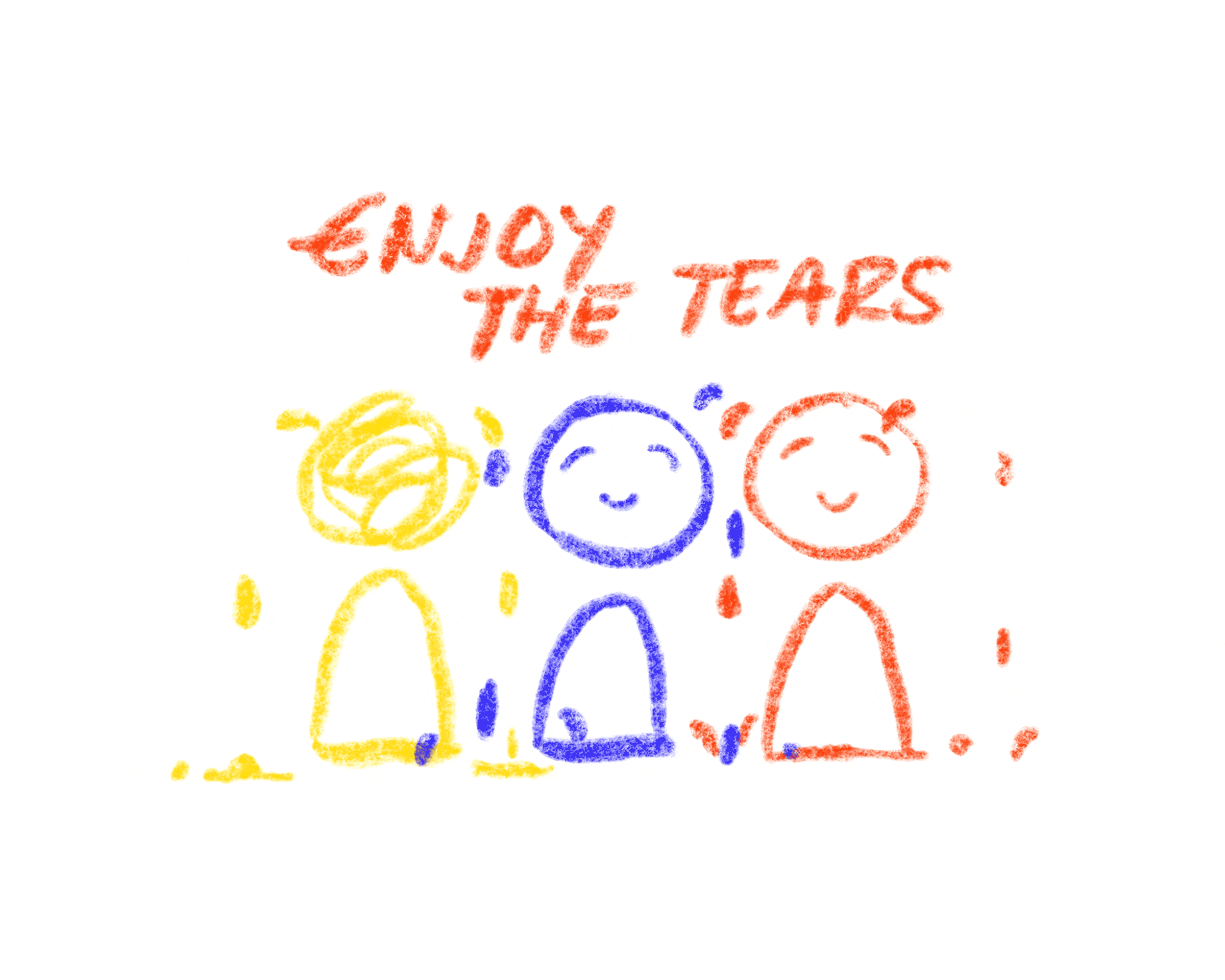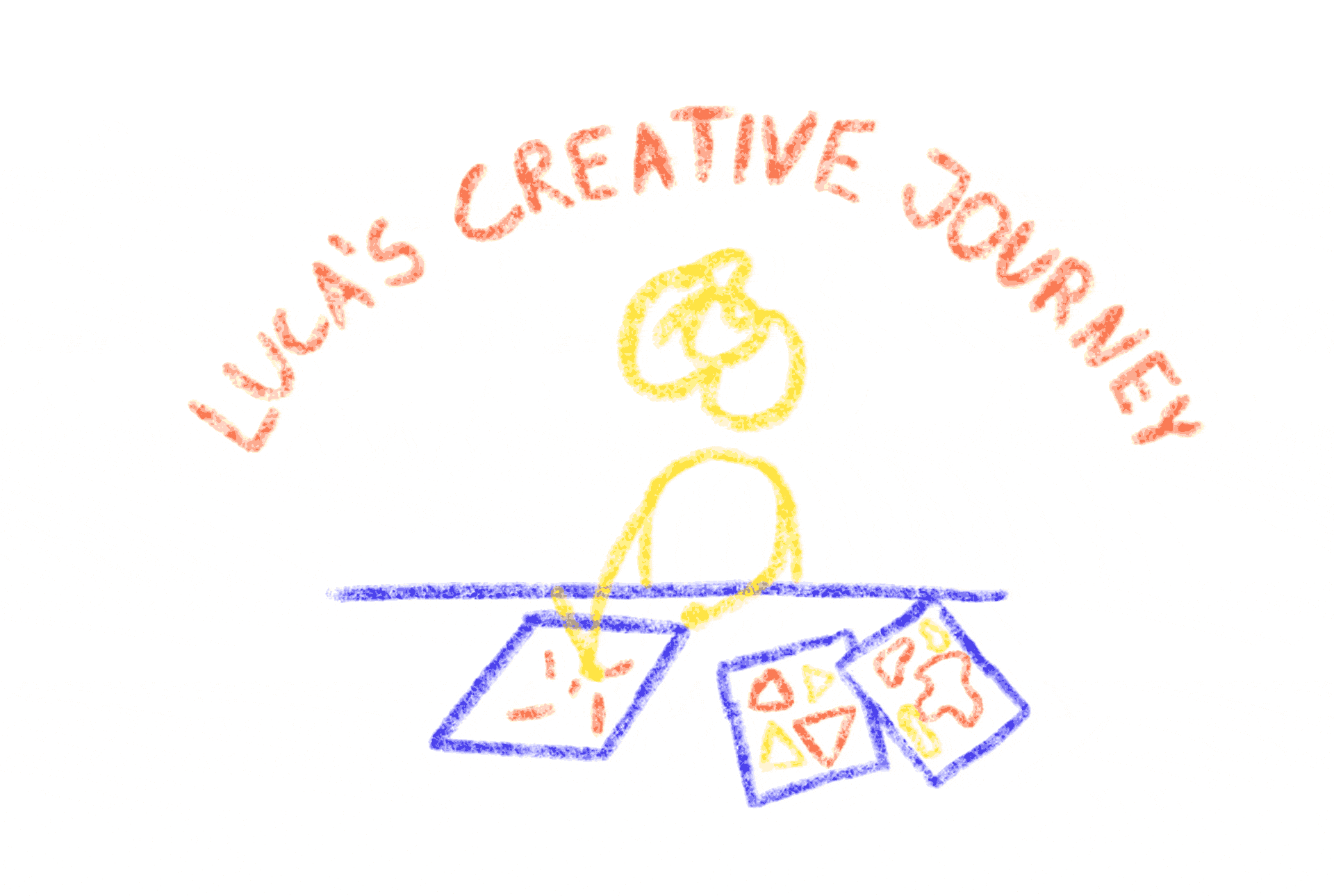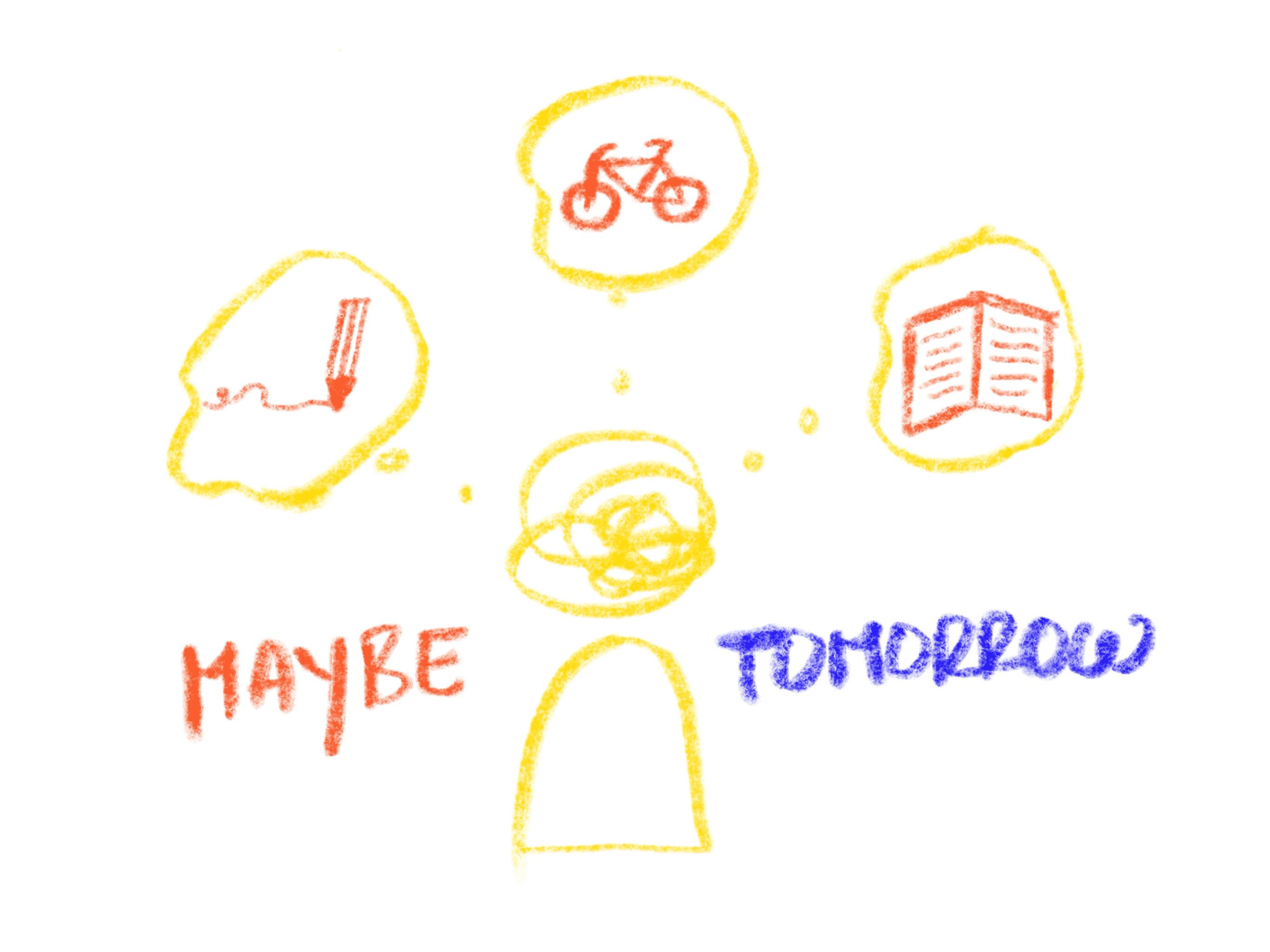
Whatever project you start will face a so-called “Valley of Tears”. A hobby will always stay there, while a business should move out or it will die trying—eh—crying. And some organizations will always remain there: These are externally financed because they can’t create a cash flow but are essential to exist in our world.

Content of this Article:
Result: Staying in motion results in more joyful moments.
Result: Celebrations lead to more joy.
Result: Seeing your progress leads to more joy.
Result: Having someone to share your tears with leads to more joy.
Result: A wide open mind leads to unexpected solutions, which bring more joy.
Result: Giving and receiving brings everyone joy.
Result: More people sharing joy leads to more joy.
Result: Acceptance leads to more joy.
Valley of Tears, a.k.a. Valley of Death
I prefer “tears” over “death” to keep up hope to make it. And “death” for the moment a project dies. So let’s fill the valley in this article with tears so we can swim out on land.
How the Entrepreneur’s mind works
It’s often a personal decision to move with an idea into the valley of tears. There is no external pressure to move, as we were taught as children in school or as employees. It’s an intrinsic motivation to start. It’s our dream and our hope to move the world forward because the present is too painful to bear. We have to do it.
When am I entering a Valley of Tears?
Imagine sitting with friends at dinner and thinking about a new business idea that’s already a tiny walk on the valley's border. When you start thinking of a new venture, you dip your little toe into the valley. You begin investing your thoughts into it.
When you buy things to prototype, you slowly move into this valley without often realizing it. It’s still easy to return to where everything is safe, but the longer you invest, the deeper you are invested, and the harder to turn around.
This is also called the sunk cost fallacy. A psychological barrier ties people to unsuccessful endeavours simply because they’ve committed resources to it.
At FutureHabits, we knew we would cross a Valley of Tears and could prepare ourselves.
At the moment I’m writing this article, we are crying, laughing, singing and enjoying the valley of tears at FutureHabits. The last venture took me about eighteen months to get through the valley without any external funding. Today I can see my friend and partner from that venture beyond the valley, walking into higher areas. Seeing this is fantastic, but our time spent together in the valley left us with incredible memories.
At FutureHabits, Alessia and I entered the valley of tears as co-founders by the end of 2022, and I must admit, I enjoy the pain and challenges that arise on those journeys.
In a way, it’s like hiking. I think there is plenty of beauty on the way to a mountain's peak. And sometimes, we have to cross a valley to go up again. It’s the same with the valley of tears; we need to be prepared enough and do everything in our imagination, to not die during that time. So let’s cry with a smile.
And here come the tips I've promised in the title of this article to enjoy a Valley of Tears.
Tip 1: Make the pressure your creative force
Isn’t it a classic for many people to procrastinate until it’s almost too late to succeed?
Having no deadlines and no pressure to move forward is a creativity killer. But it’s not only a creativity killer. It can turn a valley of tears into a valley of death quickly. I think it’s a bad idea to procrastinate in a valley of tears. I don’t understand people who start a project but then not walking their miles daily to get forward. I also had to quit long-term consultancies because the founders did not want to realize this.
There won’t come a hero on the white horse doing the steps for you. There can be funding, but it’s just a way of delaying and extending the valley. In the end, we must walk and keep up the pressure as a creative force to move forward. Always remember: If we don’t walk, the project will die.
We get way more and often better things done if there is the time ticking. Made-up deadlines are significant to help in a valley of tears to make progress every day. Making 20 miles every day, no matter how the conditions are, will get you out of it.
Result: Staying in motion results in more joyful moments.
Tip 2: Celebrate your weekly and quarterly achievements
Marching forward daily is not everything. As part of nature, it’s natural to stick to a rhythm. Every plant does, and every animal does, so let’s make use of it. We do it this way to pause and reflect so that we can learn and grow:
Daily Check-Ins (~5mins) Weekly Check-Ins (30min / person) Quarterly Check-Ins (1-2 days)

These check-ins are here to check our map and compass, to check the weather, tears and smiles. As you can see in the illustration above, sometimes we go in little circles, and that’s okay as long we realize it to move forward again. Celebrations from moment to moment are essential too, and not only on the peak of a mountain. They reinforce the energy needed to make it through a valley of tears.
Result: Celebrations lead to more joy.
Tip 3: Make your internal progress visual
Imagine an egg: You can’t see what happens from the outside, and everyone thinks about an overnight success when a little creature opens its shell. What we often forget are the dark days that are needed inside the egg before it cracks.
That’s why we make our progress visual internally. Especially for those things that don't turn into tangible results, such as important calls or funding pitches. If we only measure outcomes without embracing all the steps, that can lead to heavy tears and drain the power of everyone. Not making these steps visible can feel like nothing is happening, especially in a valley of tears.

A few daily wins result in a couple of weekly wins, and those into quarterly goals and so forth. We make our wins visible on a shared miro-board and map out our plans consistently before we act. This is a landscape of our FutureHabits Miro, existing for four months and ten weeks of shared Weekly Highlights:

We use our FutureHabits weekly Check-In framework to track our progress weekly to deliver on our OKRs (Objectives and Key Results).
Every Monday has a deadline for a couple of weekly highlights. We measure these Highlights, give them a score and set new Highlights.

Result: Seeing your progress leads to more joy.
Tip 4: Team up to support each other

An accountability partner boosts your chance of success to 95%. When people know they are being held accountable by others for their actions, they will work harder.
Most important thing first: Partnering up works best if you aren’t an “asshole” because “assholes” are left alone sooner or later. The second important thing is this: Look at matching a person’s natural characteristics of dreaming, planning and doing.
Dreamer + Dreamer = Endless Dreaming
They would never start crossing a valley but always dream about what might happen in perfect scenarios. Dreamers have infinite optimism.
Planner + Planner = Endless Planning
They would never leave the tent, endlessly watching their compass and map and discussing the best route.
Doer + Doer = Go in Circles
They would never stop walking to check their map and compass. That not only leads to bodies that collapse but also to an unhappy mind that asks for meaning.
We are all Dreamers, Planners and Doers, but in different quantities.
If you team up to support each other, having a good overlap of these characteristics is best. For example:
| Dreamer | Planner | Doer |
Person A | Strong | Weak | Good |
Person B | Weak | Strong | Good |
Some people are incrementalists and have fairly distributed characteristics.

Alessia and I are both incrementalists. For incrementalists, it’s essential to be aware of which character is when at work. A doer naturally gets overwhelmed by a dreamer. And a dreamer often gets blocked by a doer. A planner brings structure to work and acts like a coach. Dreamers are focused on the WHY, Planners on the HOW and Doers on the WHAT.
Our HarmonyBoard is a mindtool that helps to make the mindset at play visual by placing every person's token in the circle in which they are in the moment. It works for individuals and also in group meetings.
Result: Having someone to share your tears with leads to more joy.
Tip 5: Keep your mind wide open
A closed mindset can stop everything. In the valley of tears, it’s important to keep your mind wide open. Other people’s ideas should never be bashed or stopped. Collect everything when people bring their feedback. Ask for more, and write things down. Try to find patterns to understand their view.
Imagine walking on a sunny day in a valley. You only wear a t-shirt, and someone walks by and says, “it’s cold out here. You better bring warm clothes”. That might not make sense to you now, and you respond, “Haha, I feel warm enough…”—but when it turns to night, you are fucked up. Ask them for more information so you can make better conclusions. Try not to see everything as a competition to win; it will close your mind. Instead, be cooperative.
When I’ve worked with closed-minded founders, I realized they often fight against every little feedback or idea. I still wonder why ¯\_(ツ)_/¯
Result: A wide open mind leads to unexpected solutions, which bring more joy.
Tip 6: Invest in those who move the project forward
On every journey, we’ll meet people who kindly support us with their words, skills, and services. I think it’s crucial to invest back in those who move you through the valley of tears.
Let’s go back to the metaphor of crossing a valley. Imagine someone joins your walk who has more muscles and practice. You start talking, and they like the dream you’re chasing and want to support you by helping you with your baggage.
Find out what people need and want to stay with you so that you can move forward with each other.
It would be short-sighted to give them more and more baggage and not listen when they start crying. We are talking about a valley of tears, but that doesn’t mean we must make it a valley of death.
Sucking out people without giving back is an “asshole”-move. Entitled people do this naturally and all the time. The best you can do is walk away from them. Keep your eyes open for those who support you and your dreams, and avoid those who try to drain you.
Result: Giving and receiving brings everyone joy.
Tip 7: Surround yourself with supportive people that believe in your project

Nothing is worse than having people around you blame or not support you for working through the valley of tears. It’s good to surround yourself with those who have made it themselves through a valley of tears or see and support the dream you are chasing. A few kind words can be very empowering.
Result: More people sharing joy leads to more joy.
Tip 8: Embrace that conditions always change
Singin’ in the rain or being angry at the weather’s change. When it starts raining, and you don’t have anything to protect yourself from getting wet, you can be mad about the weather or yourself for not wearing the right clothes or embracing the rain. It won’t rain forever, so why not embrace its uniqueness? Why not use it so you can drink it later to cry more tears?
Acceptance plays a significant role in lowering stress levels. Stress is high when we want different conditions, as there are in the now. When you start to try changing unchangeable conditions such as the weather, it’s also a form of active procrastination and sandbagging from actually doing the painful steps you must take.
When you are passing the valley of tears, don't make life hard by hating it. Embrace it the best you can.
Result: Acceptance leads to more joy.
Quick Recap:
The Valley of Tears is not for everyone; many projects die there. That’s why it’s actually called the Valley of Death. Projects die for many reasons, not only because of a lacking cash flow.
The strangest thing is when founders stop believing in making it and start to become apathetic. In the metaphor of crossing a valley, this could look like a person giving up during a hike, standing there, waiting for death, and blaming everyone else.
Finding ways to enjoy the journey through a valley of tears reinforces energy. It’s all about building a team and community so you can laugh together about the weather and support each other along the way.
Do you like what you read? Invite a friend so we can help them build habits that move the world forward.





















